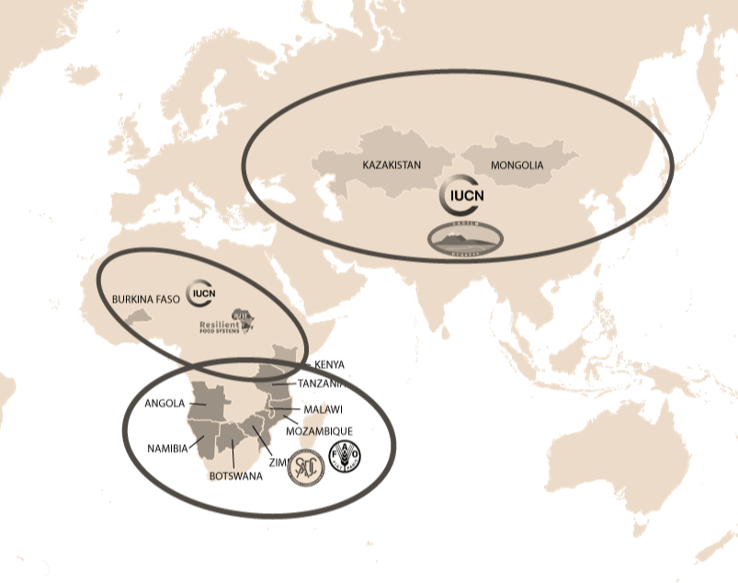Our Footprint
Regional Exchange Mechanisms
Regional Exchange Mechanisms (REMs) have been established to enhance the regional impact of the DSL IP country projects, ensuring coherence in regional coordination, knowledge exchange and support for synergies among countries involved. DSL-IP country country projects are clustered under three Regional Exchange Mechanisms (REMs) – corresponding to the three eco-regions targeted by the program. REMs leverage on existing knowledge hubs, and play a central role in bridging the local and national to the regional and international spheres of the program. They contribute to increase the magnitude, durability and scope of impacts of GEF-7 investments in sustainable drylands management in DSL-IP countries and non-DSL-IP countries in the targeted ecoregions.
 Map displaying the three Regional Exchange Mechanisms of the DSL-IP.
Map displaying the three Regional Exchange Mechanisms of the DSL-IP.
- REM East and West Africa works closely with the GEF-6 Resilient Food Systems programme.
- REM Central Asia works closely with the Central Asian Countries Initiative for Land Management (CACILM).
- REM Southern Africa closely aligns its interventions with Southern Africa Development Community (SADC)’s efforts to combat land degradation, in particular the Great Green Wall Initiative under the Sub Regional Action Programme to Combat Desertification (SRAP) of which all the Southern Africa DSL-IP country projects form part of.




-world-bank.jpg?sfvrsn=c9b4ed7c_1)






